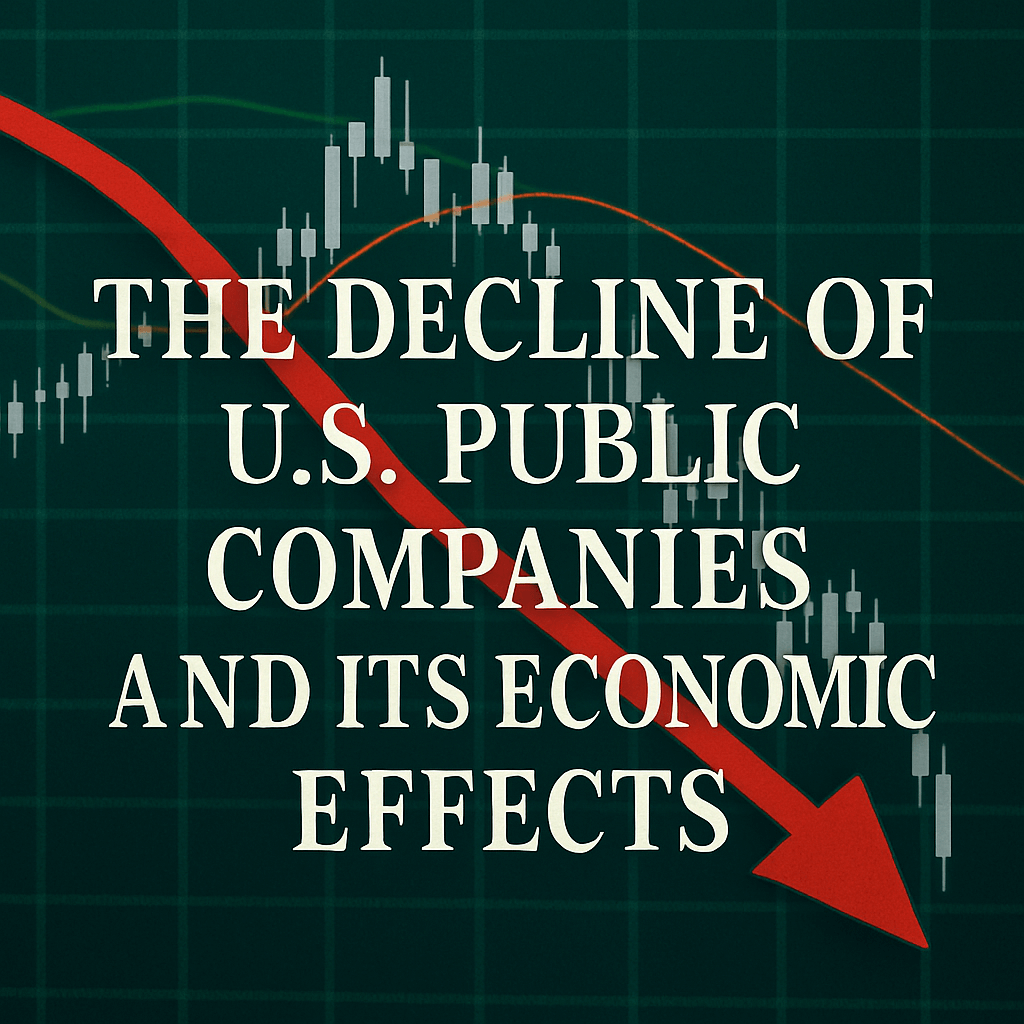The Decline of U.S. Public Companies and Its Economic Effects

The U.S. economy remains the most powerful and formidable in the world, yet a troubling trend threatens its vitality. While economists focus on inflation and interest rates, and politicians weigh options in an election year, one significant issue looms regarding the future of American enterprise: the continuing decline in the number of public companies in the United States.
Jamie Dimon’s Warning
JPMorgan CEO Jamie Dimon recently addressed this concern in his annual letter to shareholders, highlighting a disturbing trend. In the mid-1990s, there were nearly 8,000 publicly traded companies in the U.S. Today, that number has fallen to around 4,000, representing a 50% decline. Moreover, if current trends persist, this number is projected to halve again by 2044. “The total should have grown dramatically, not shrunk,” stated Dimon, encapsulating the gravity of the situation.
The Staggering Speed of Decline
This reduction in public companies is not just a numerical concern; it also poses a substantial threat to entrepreneurship and innovation, which are vital for economic growth. Exit opportunities in public markets serve as crucial incentives for startups, encouraging creativity and ambition. If public listings continue to decline, the ramifications for the U.S. economy could be severe, stifling the dynamism that has characterized American industry.
Key Factors Contributing to the Decline
Several factors have contributed to this decline:
- Mergers and Acquisitions: The consolidation of public companies has led to a decrease in the total number of publicly listed firms.
- Regulatory Hurdles: Increased compliance costs and stringent regulations have dissuaded many companies from feeling that going public is feasible or desirable.
- Trends in Capital Financing: The proliferation of venture capital and private equity has created an environment where companies can remain private longer, thereby avoiding the pressures associated with public scrutiny and short-term performance metrics.
In 2022, the initial public offering (IPO) market fell to a 32-year low, reflecting a broader trend in financial markets where few companies are choosing to list publicly. While high-profile IPOs in 2023, such as Ibotta, Reddit, and Astera Labs, sparked some interest, they did not significantly revive overall activity. The slow pace of new listings must change if the U.S. is to maintain a vibrant economy.
Comparative Global Trends
Interestingly, the decline of public companies is not isolated to the U.S. The European Union (EU) is grappling with similar trends, facing sluggish IPO markets and increasing consolidation among firms. However, Asian markets, particularly in regions such as Southeast Asia and China, have been witnessing a renaissance of public listings, where stock exchanges have encouraged new entrants through various incentives.
Addressing the Decline
To revitalize the U.S. IPO market, several actionable steps can be proposed:
- Regulatory Reforms: Reassessing and potentially loosening regulations that stemmed from the Sarbanes–Oxley Act of 2002 can mitigate some of the burdens on companies considering going public.
- Utilizing the JOBS Act: Expanding on the Jumpstart Our Business Startups (JOBS) Act of 2012 can empower companies to test the waters with investors before a formal IPO, ensuring they can ascertain market appetite without facing immediate listing pressures.
- Creating Scaled Compliance Requirements: Implementing tiered compliance obligations can allow small to mid-sized enterprises to gradually meet disclosure requirements, thereby providing a smoother transition into public markets.
- Incentivizing Going Public: Offering tax breaks or financial incentives could improve the attractiveness of listing, urging more companies to consider going public rather than remaining private.
- Shortening Lock-Up Periods: Reevaluating the traditional lock-up periods for early investors could stabilize post-IPO prices. Reducing these periods to align with modern trading practices could facilitate a more equitable market environment.
Implementing these strategies necessitates a coordinated response involving policymakers, regulators, investors, and the wider business ecosystem. By creating an environment that fosters public listings, the U.S. can safeguard its reputation as a leader in innovation.
The Importance of Public Markets
Public markets embody an essential, democratic aspect of the U.S. economy. They democratize access to capital, enabling broader participation from various socioeconomic backgrounds in wealth creation. However, the diminishing number of public companies restricts these opportunities, hampering economic inclusivity. The need for broad-based participation in the economy has never been more critical, given rising inequalities.
Furthermore, an active public market stimulates investment in innovation, bolstering entrepreneurship. As companies earn public support and financing, they can invest more in research and development and attract talent. This virtuous cycle ultimately contributes not only to corporate success but national economic growth.
Conclusion: Time for Action
As Jamie Dimon aptly points out, the decline in U.S. public companies poses a serious threat to the fabric of American economic democracy. It is paramount that stakeholders unite to design and implement pragmatic solutions that will encourage more companies to take the public route. If these trends continue unchecked, the U.S. risks losing its edge in global innovation and entrepreneurship.
Eric Hippeau is Managing Partner at Lerer Hippeau.
More must-read commentary published by Fortune:
- Jamie Dimon for president? Why the banking CEO would be a welcome alternative for many voters.
- Trade and investment data in the last two years dispel the deglobalization and decoupling myths as U.S.-China competition ignites ‘reglobalization’.
- Big Tech employees missed out on $5.1 billion in 401(k) gains over the last decade because of fossil fuels, new research finds.
- America’s productivity growth is recovering to pre-Great Financial Crisis rates. Europe has more work to do.
The opinions expressed in Fortune.com commentary pieces are solely the views of their authors and do not necessarily reflect the opinions and beliefs of Fortune.
Did your workplace make our list of the 100 Best Companies to Work For? Explore this year’s list.